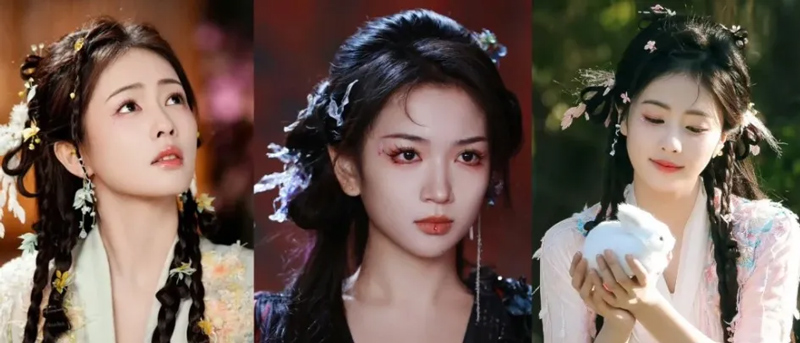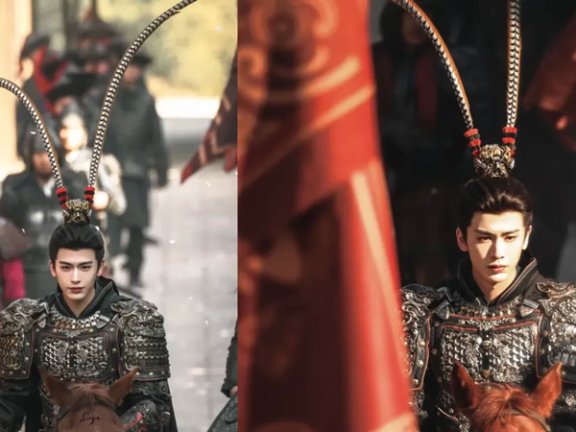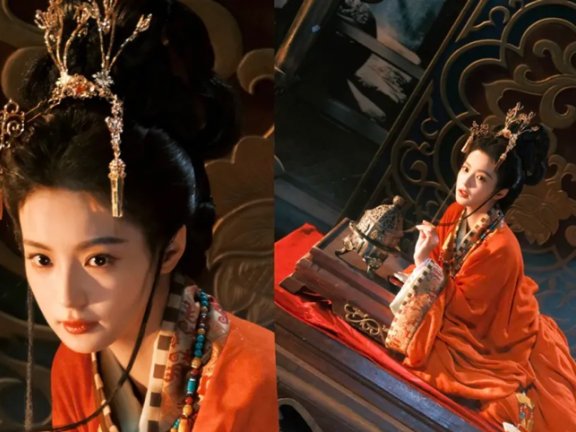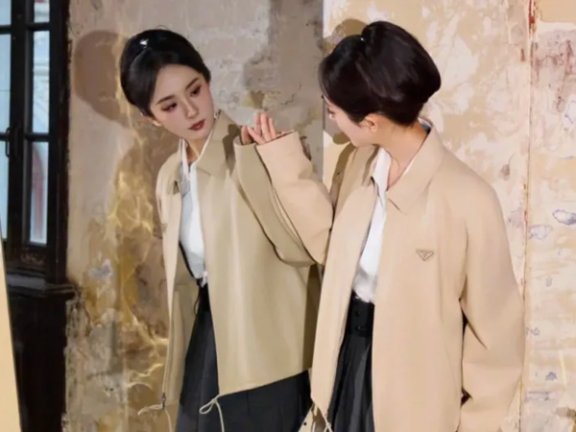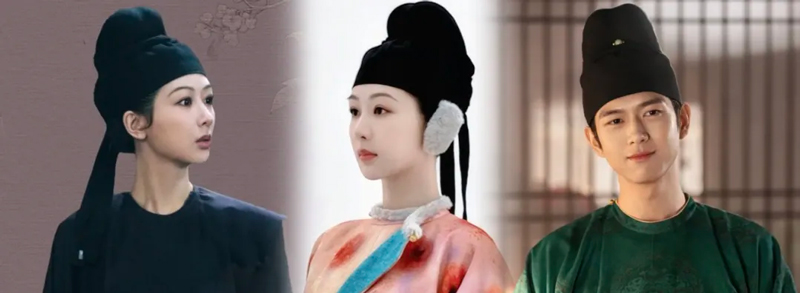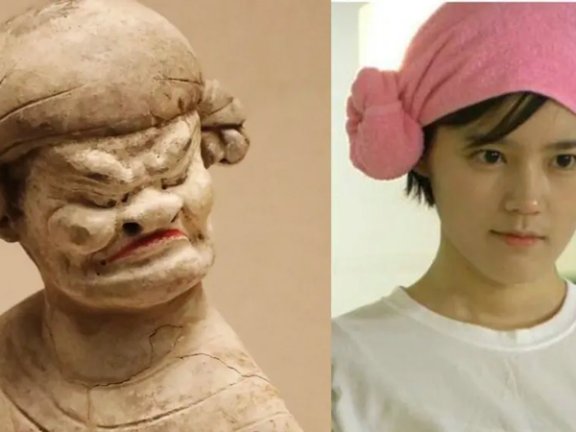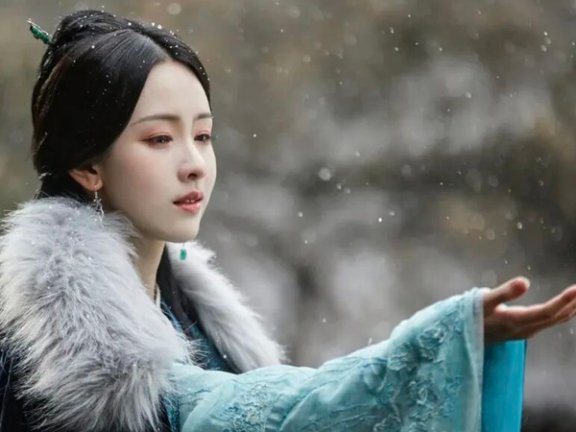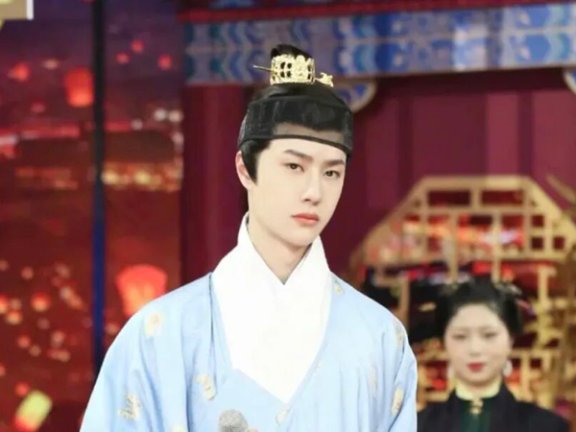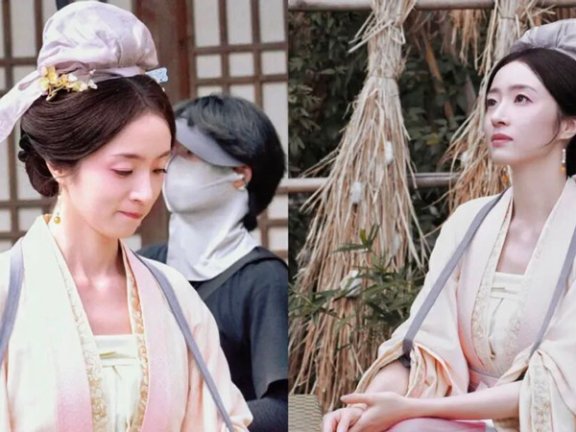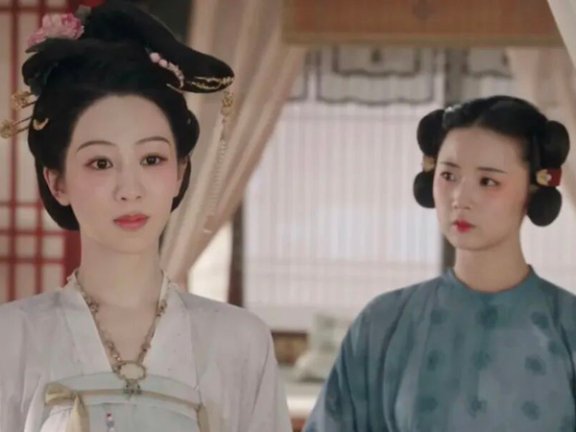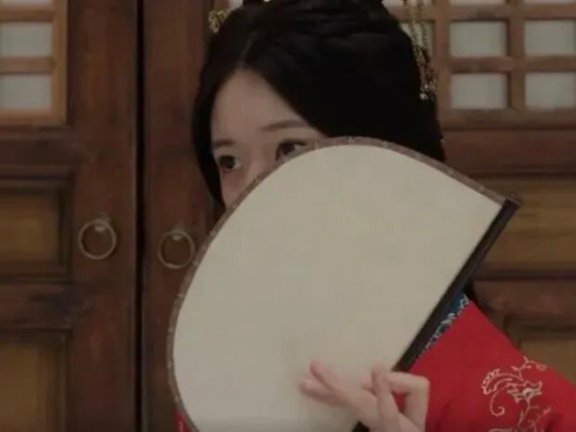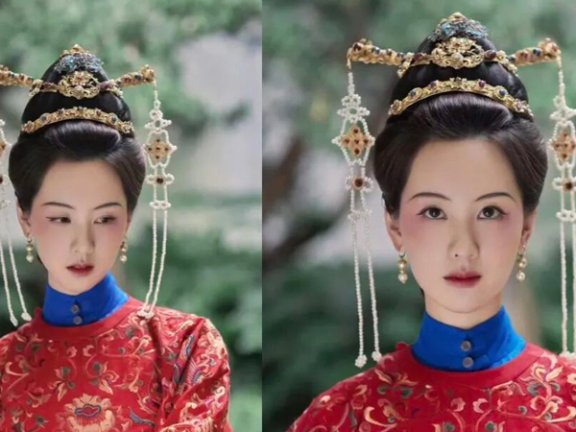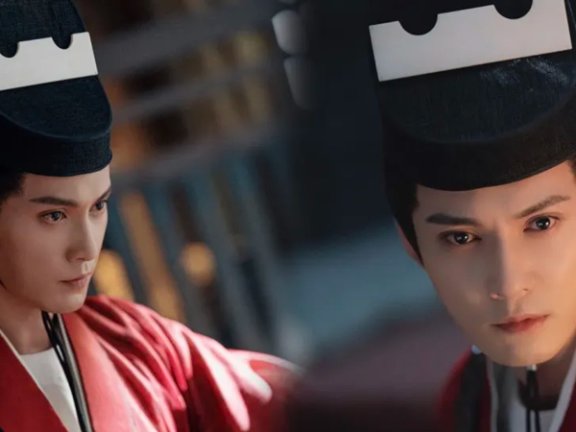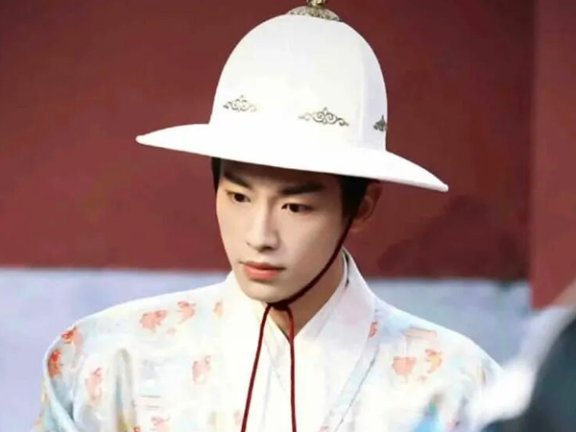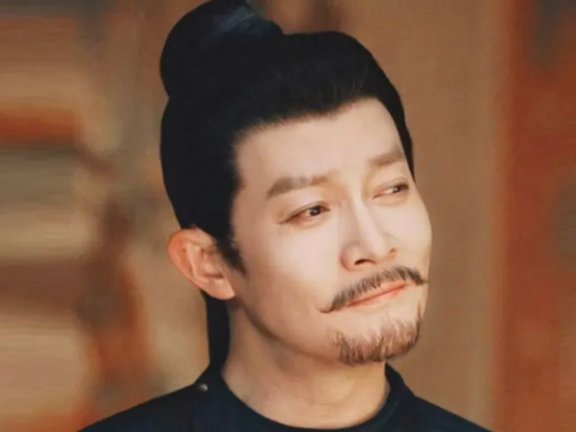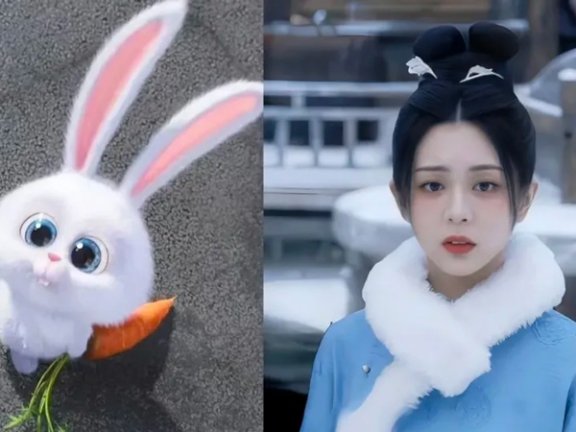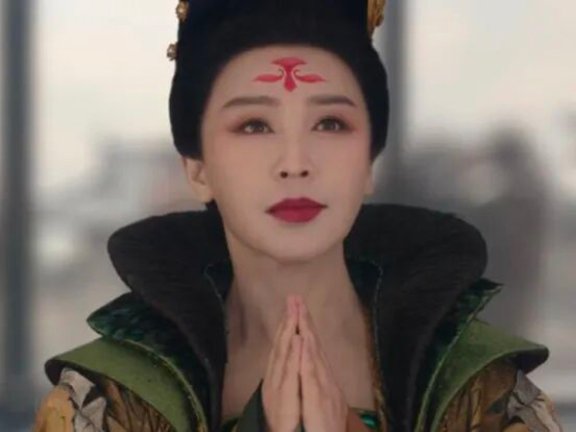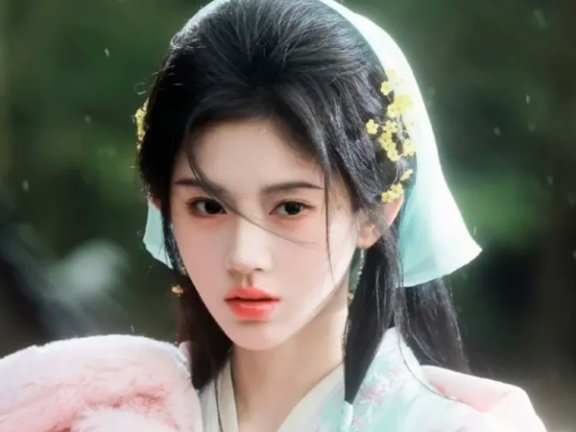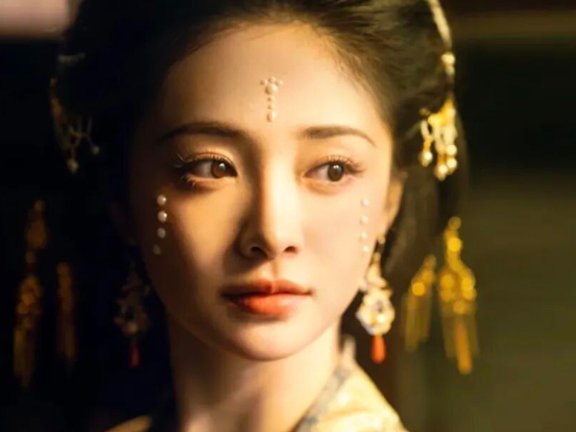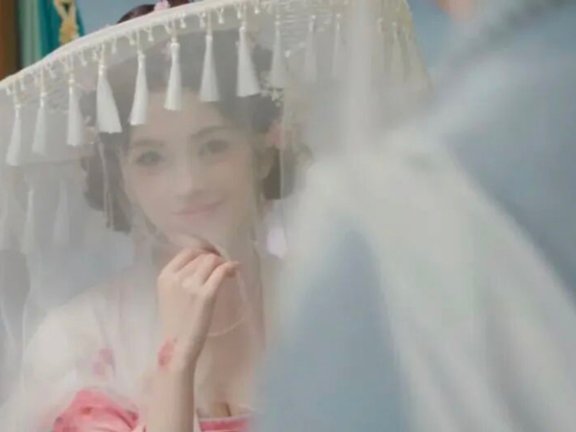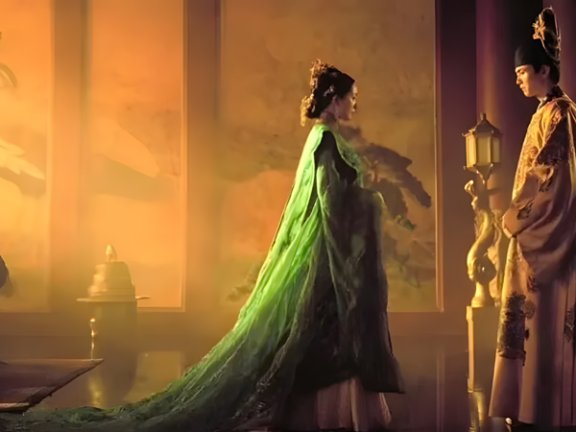-
Why Does Every Face in Chinese Period Dramas Look the Same Now?
Watch any current Chinese historical television series, and a familiar visual echo emerges. From princesses of the Tang Dynasty to wandering swords-women of the Wuxia genre, a single, standardized face seems to dominate the screen. This uniform look features sharply defined eyebrows, porcelain-white foundation, dramatic eyelashes, and vivid red lips, all smoothed under heavy digital filters. The result is a procession of performers who appear molded from the same template. This phenomenon transcends mere casting trends; it reflects a profound shift in aesthetic principles, where personalized character design has been sacrificed for a replicable, instantly recognizable "instagrammable" beauty. The question isn't just about makeup—it's about what we have collectively decided to value in visual storytelling. The Disappearing Face The craft of screen makeup was once a tool for transformation and revelation. Its purpose was to serve the narrative and illuminate character. An actor's face was a canvas where time, status, and personality could be painted. Today, that priority has often inverted. The primary goal appears to be making the actor conform to a trending, socially-mediated ideal of beauty, regardless of historical context or role. Makeup artists, sometimes less experienced than popular beauty bloggers, apply the same techniques to every performer.… -
Why Are We So Wrong About Qing Dynasty Hair?
Open any television show or film set during the Qing dynasty, and you’ll see a familiar sight: men with shaved foreheads and long, thick braids of hair down their backs. This style, often called a "queue," has become the universal visual shorthand for the era. From the scheming courtiers in Empresses in the Palace (甄嬛传) to the romanticized princes of Scarlet Heart (步步惊心), the hairstyle is a constant. But this ubiquitous image is a historical fiction, a modern compromise for audience appeal that whitewashes a brutal and symbolic reality. The iconic "half-shaved" look is actually a late-Qing invention, a far cry from the humiliating and severe hairstyles mandated when the dynasty first seized power. The "Money Rat Tail" The true hairstyle of the early Qing was starkly different. Following the Manchu invasion and the establishment of the Qing court, the infamous "Queue Order" was decreed: "Keep your hair and lose your head, or keep your head and lose your hair." The mandated style was the Jinqian Shuwei (金钱鼠尾, "Money Rat Tail"). This involved shaving almost the entire head, leaving only a small patch of hair on the crown, roughly the size of a copper coin. This tiny patch was then… -
The Royal Collar: How a Song Dynasty Neckpiece Ruled the Court
In the historical drama Serenade of Peaceful Joy (清平乐), a peculiar white neckpiece adorns the robes of officials, instantly capturing the modern viewer's eye. To contemporary audiences, it might resemble an odd fashion accessory or even a pet's collar. But this item, far from mere decoration, was a powerful instrument of state authority. Its correct name is the Fangxin Quling (方心曲领), and its story is one of rigid hierarchy, cosmic symbolism, and physical discipline within the imperial system. A Mark of Rank Not every official in the Song Dynasty could wear the Fangxin Quling. Its privilege was reserved by law for those of the seventh rank and above, specifically those entitled to wear a certain type of ceremonial undergarment. This regulation, documented in texts like the Book of Sui (隋书·礼仪志七), made it a clear, visual demarcation between high-ranking central bureaucrats and lower-level local magistrates. It was a badge of inclusion within the empire's most powerful administrative circle. This was not a Song invention. The collar's institutional origins can be traced back to the Sui and Tang dynasties, evolving from more complex ceremonial attire. The Song court fully standardized and codified its use, embedding it firmly within the formal court robe… -
Pearls on Screen and Silk: Did a Song Dynasty Trend Just Go Viral?
A recent period drama photo has set the internet abuzz. In stills from the upcoming series Yi Ou Chun (一瓯春), actress Zhou Ye’s (周也) costumes feature a striking detail: hems and seams meticulously edged with pearls. Online commentators were quick to praise the exquisite craftsmanship, with many marveling at the advanced aesthetic sensibilities of ancient China. This isn't just a random design choice; it’s a direct homage to a specific and lavish fashion trend from the Song Dynasty (960–1279 AD). The shimmering trim is a recreation of Zhu Luo (珠络, pearl edging), a practice that saw pearls adorn everything from the collars and cuffs of formal robes to the seams of luxurious garments. This rediscovery highlights a timeless fascination with pearls and reveals how a royal decree, sumptuary laws, and sheer love for beauty shaped fashion a millennium ago. Courtly Sparkle The use of Zhu Luo was a definitive marker of elite status during the Song era. Its application was widespread and extraordinarily detailed. Portraits of empresses from the period show them in wide-sleeved ceremonial robes where pearls trace every edge, from the crown and face ornaments down to the hems of their shoes. Historical records describe specific garments, like… -
Zhang Linghe’s Feathered Helmet in Chasing the Jade
Have you recently scrolled past a historical drama photo where a young actor's helmet is crowned with two wildly long, colorful feathers? This exact image of actor Zhang Linghe (张凌赫) from the costume drama Chasing the Jade (逐玉) set the internet abuzz. Fans were instantly reminded of the iconic Monkey King, Sun Wukong (孙悟空), leading many to joke, "Has ancient costume drama borrowed the Great Sage's style?" This striking headdress, far from a modern fantasy invention, is a deliberate callback to a deep and symbolic tradition in Chinese performance arts. Known as pheasant feathers or "Zhijiling (雉鸡翎)", these plumes are more than decorative flair. They are a dynamic language of their own, whispering tales of character, status, and millennia of cultural evolution directly from the wearer's brow. Roots in Ritual and Battle The story of these feathers begins not on stage, but in ancient ceremony. Their earliest traceable lineage connects to the ritual dances of the Zhou Dynasty, governed by the strict codes of Zhou Li (周礼). In these performances, particularly the esteemed "Ba Yi (八佾)" dance reserved for imperial rites, dancers held ceremonial implements called "Di (翟)." These were often crafted from the long, iridescent tail feathers of pheasants,… -
Why Zhang Yaqin’s Era-blending Outfit Divided the Internet
When actress Zhang Yaqin (张雅钦) recently appeared in a Hanfu ensemble, the internet divided. For some, it was an immediate callback to her role as Lu Yuan (陆鸢) in the time-travel drama An Ancient Love Song (古相思曲). For many others, the look missed the mark, feeling disjointed and overly busy. Why did this particular outfit, rich in historical references, fail to resonate? The answer lies not in a lack of beauty, but in a collision of eras. Her styling became a textbook case of how mixing distinct historical aesthetics without a unifying vision can create visual confusion, pulling the observer out of the immersive fantasy such clothing aims to build. Historical Harmony Lost The most striking issue is the temporal dissonance. Her hairstyle is a Shuang Huan Wang Xian Ji (双鬟望仙髻), a high, twin-loop style popular during the Wei, Jin, and Northern and Southern Dynasties, often seen in deity and court lady paintings. This ethereal look was complemented by dangling side locks, or Chui Shao (垂髾), enhancing the otherworldly vibe. However, the hairpins tell a different story. She wore two styles of Buyao (步摇), or step-shakers. One was a Western Han design, its dangling beads meant to sway gently with… -
Why Yang Mi's Hair Buns Are Sparking a Fashion Reshape?
A recent public appearance by actress Yang Mi ignited a fiery online debate. Her choice? A meticulously crafted traditional Chinese hair bun paired not with a Qipao or modernized Hanfu, but with a crisp, contemporary blouse. Critics were quick to declare the mix a mismatch, questioning the logic behind blending a classical hairstyle with Western-style fashion. Yet, this seemingly simple style clash touches on deeper questions about tradition, modernity, and who gets to define the rules of cultural expression. Is this a fashion faux pas, or a bold step towards redefining a heritage art form for a new generation? A Historical Journey The Chinese hair bun, or Ji (髻), is far more than a hairstyle. Its history is woven into the fabric of social rites and personal identity. In ancient China, the act of a young woman putting up her hair for the first time during the Jiji Li (及笄礼), or Hair Pinning Ceremony, was a pivotal rite of passage into adulthood. This transformation from loose locks to a secured bun was a powerful social symbol. Archaeological evidence suggests the practice dates back to the Neolithic Age, evolving significantly through dynasties. The Han Dynasty favored soft, low-hanging chignons that conveyed… -
What a Tang Dynasty Hat Tells Us
In many television series set against the backdrop of the Tang Dynasty, like the popular drama Flourished Peony (锦绣芳华), audiences often notice the distinctive headwear worn by characters. This item, which might look oddly familiar to a modern eye, is called a Futou (幞头). It was the most common form of male headgear during that era, a simple yet sophisticated piece of cloth that evolved into a powerful symbol of identity and status. Far from being a static fashion item, its transformation mirrors the social and cultural currents of one of China's most celebrated dynasties. More Than Just Cloth The Futou originated as a practical headscarf. Its basic form involved wrapping a piece of black silk or linen around the head. There were two primary methods: the soft wrap and the hard wrap. The soft wrap was for everyday use, where the cloth was tied directly onto the head, conforming to its shape. The hard wrap was more structured. It required a stiffened base, known as a Jinzi (巾子), placed on the head first. The cloth was then wrapped over this frame to create a more pronounced and formal shape. The style of the Jinzi changed noticeably over time. In… -
Was That K-Drama Hair Towel Worn in Tang China?
Viewers of recent Korean dramas have been charmed by a peculiar styling choice: characters often lounge at home wearing what looks like a bath towel twisted into playful “sheep horns” on their heads. This trend, sparking countless social media tutorials, feels distinctly modern. Yet a recent archaeological revelation suggests this playful accessory has a precedent over a millennium old and thousands of miles away. A painted grey pottery figurine from a Tang Dynasty tomb is wearing what appears to be the very same style, challenging our assumptions about novelty and tracing a fascinating thread through fashion history. An Ancient Discovery The figurine was excavated from the tomb of Mu Tai (穆泰), a border defense general during the Tang Dynasty. His burial site, located in Qingcheng (庆城) County, contains clear evidence of cultural exchange between Han Chinese and northern nomadic traditions. The statue’s headwear is the standout feature: two distinct, cloth-like protrusions curve upward from the sides of the head, strikingly similar to the twisted “sheep horn” towel look popularized on screen today. Scholars quickly identified this not as a typical Han Chinese crown, but as a form of Fanmao (蕃帽), or “foreign cap.” These caps, referenced in Tang and Song… -
Why Are Period Drama Costumes So Thin?
Viewers of historical Chinese dramas often share a common thought during winter scenes: those actors must be freezing. The diaphanous gowns, often little more than a single layer of silk, seem utterly inadequate against painted backdrops of snow and ice. While a flowing cloak might be added for effect, the costumes underneath remain stubbornly, beautifully thin. This consistent aesthetic choice prompts the question: is this what people really wore, or is it purely for the camera? Historical Layering The reality of historical winter wear was fundamentally about layers, not just fabric weight. A Tang Dynasty woman, for instance, would have employed a sophisticated system of overlapping garments. This would start with close-fitting undergarments, followed by a lined jacket and skirt, and then a padded outer robe or coat. A final, large shawl or cape provided additional protection. This multi-layered approach trapped air and created insulation far superior to any single garment. For the elite, winter wear was both warm and luxurious. Mianpao (绵袍), or silk-wadded robes, were common. Here, "mian" refers to silk floss, a lightweight and highly effective insulating material akin to a natural down filling. More extravagant outfits incorporated furs from sable, fox, or rabbit for collars, cuffs,…- 0
- 0
- 24
-
Wang Yibo's Hair Net: A Ming Dynasty Fashion Statement or Modern Mystery?
When Chinese actor and singer Wang Yibo (王一博) appeared on the variety show Day Day Up (天天向上) years ago, a specific costume detail ignited online curiosity. His headpiece, resembling a sparse fishnet, led many to wonder if it was a styling error. However, this accessory was a deliberate choice, rooted in centuries of tradition. Far from a mistake, it represents the Wangjin (网巾), a functional hair net from China's Ming Dynasty. This glimpse into historical fashion, facilitated by a modern celebrity, opens a window to understanding how everyday items from the past carried significant cultural weight. The conversation it sparked highlights a common disconnect between contemporary perceptions and historical reality, urging a closer look at the artifacts that shaped daily life in ancient China. Origins and Use The Wangjin was a foundational item in the wardrobe of Ming Dynasty men. Designed as a mesh net, its primary function was to bind one's hair, or bundle the hair, containing loose strands and creating a neat base for headwear. Its adoption was not merely a fashion trend but a practical solution for managing hair, which was typically worn long. The net also provided grip, preventing hats and official headdresses from slipping during…- 0
- 0
- 24
-
Hu Bingqing: Her Song Dynasty Baoji in Da Song Ci Ren Zhuan
A single image from a documentary has captivated audiences, sparking both curiosity and admiration. In the CCTV production Da Song Ci Ren Zhuan (大宋词人传), actress Hu Bingqing (胡冰卿) portrays Xu Wenmei (徐文美), the wife of renowned poet Qin Guan (秦观). Her most striking feature is an elegant, sculptural headwrap that some viewers humorously compared to a chef's hat. Yet, far from being a culinary misstep, this delicate headdress is a meticulously researched piece of historical attire. It represents a perfect marriage of actress, aesthetic, and era, leading fans to applaud the "authoritative taste of CCTV" for its authentic and harmonious presentation of Song Dynasty elegance. The Headwrap's History The style worn by Hu Bingqing is known as a Baoji (包髻), a term literally meaning "wrapped hair knot." Its origins can be traced to practical necessity. For women engaged in daily work or managing households, keeping intricate hairdos tidy was a challenge. The Baoji offered a simple, graceful solution: a square piece of cloth, often silk or fine linen, folded and wrapped securely around the styled hair. This practice was not invented in the Song Dynasty. Its precursor was the more structured Jinguo (巾帼), a headdress from the Han Dynasty. The… -
How Attire and Hairstyles Showed Servant Status in Imperial China
In contemporary historical dramas set in ancient China, a puzzling visual trend often leaves viewers scratching their heads: maidservants and their mistresses appear almost identically dressed, differentiated only by slightly less elaborate accessories. This blurring of costume hierarchies challenges audience perception and raises questions about historical authenticity. What were the actual sartorial rules for servants in imperial households? How did clothing and hairstyles clearly demarcate social standing? Moving beyond modern screen interpretations, historical artifacts and paintings reveal a defined and practical aesthetic for maidservants, one that balanced functionality with visible subordination. Understanding these codes not only enriches our view of the past but also offers a lens to critique current cinematic practices. Attire and Status Servants' clothing across dynasties was fundamentally shaped by practicality and symbolism. Unlike their mistresses, who wore luxurious silks and brocades, maidservants typically donned garments made from humble Mian (棉, cotton) and Ma (麻, linen). These fabrics were affordable, durable, and suited for daily chores. After cotton's proliferation in the Ming dynasty, it became the standard material for working attire. The basic ensemble often consisted of a simple, cross-collar top worn over trousers, allowing for ease of movement during tasks like cleaning, serving, or accompanying the…- 0
- 0
- 35
-
Could This Blade in Her Hand Be Ancient China’s Most Versatile Accessory?
A recent image from the popular drama Love Like The Galaxy (星汉灿烂) sparked curiosity and amusement online. Actress Zhao Lusi (赵露思) was pictured holding what appeared to be a short, knife-like object against her face. Fans questioned the peculiar prop. However, this was no blade, but a remarkable example of ancient Chinese design: a hand fan known as a Bianmian (便面), or sometimes a Hushan (户扇). This object, with a history stretching back over two millennia, reveals a practicality and elegance far beyond simple air circulation. More Than a Fan The Bianmian is instantly recognizable by its rigid, often rectangular or trapezoidal shape, resembling a kitchen chopper or a small paddle. Its defining feature is a single, fixed handle attached to a flat face, commonly made from bamboo or wood. Unlike folding or round fans, it does not conform to standard geometric shapes. Its primary function was indeed to create a breeze by waving it, pivoting around the handle like a door on its hinge, which explains its alternate name, Hushan, or "door fan." Yet its use extended far beyond personal comfort. One of its most noted social functions was as a "face shield." In crowded streets or during travel,…- 0
- 0
- 11
-
Why Are We So Obsessed With a Ming Dynasty Hairstyle?
A modern celebrity steps out in full historical regalia, and the internet buzzes. When actress Chen Duling (陈都灵) recently appeared in a meticulously crafted Ming Dynasty (明朝) ensemble, the focus wasn't just on the gorgeous silks. It was the towering, intricate headdress that captivated everyone. This wasn't mere costume play. It was a portal to a world where hair was architecture, and every pin held meaning. Her look taps into a growing fascination with historical accuracy and the sophisticated beauty standards of ancient China, proving that an elaborate 500-year-old hairstyle can feel strikingly relevant today. Architecture for the Head The foundation of Chen's look is the Jiaji (鬏髻), a pivotal Ming invention. This was not just styled hair. It was a wearable structure. Artisans created a lightweight frame from wire or bamboo, then meticulously covered it with real hair or silk. Worn over the wearer's own tied-up locks, it instantly added height and volume, creating a majestic silhouette. Available in styles like the Luohan Ji (罗汉鬏) or Shuangfeiyan (双飞燕), these were purchased ready-made from shops, much like buying a statement hat or hairpiece today. The Jiaji was more than a trend; it was a necessary canvas for the stunning jewelry… -
Xu Zhengxi's Hat in Yong'an Dream Look So Unusual?
An online discussion has erupted around the distinctive headwear worn by actor Xu Zhengxi (徐正溪) in the historical drama Yong'an Dream (永安梦). Instead of the typical ornate crowns, his character sports a cap with what appear to be two small, curious eyes peeking out from the top. This unique design has captivated viewers, with many joking that only he could carry off such a peculiar look. The answer to this sartorial mystery lies not in a costume designer's whim, but deep within the fashion history of ancient China. This headpiece is a gateway to understanding the practicalities and social codes of attire during a dynamic period in Chinese history. The Hat's True Identity The cap is known as a Pingjin Ze (平巾帻). A Ze was a type of informal cap worn under more formal headpieces, and its use dates back to the Han Dynasty. It became particularly popular from the Wei and Jin periods through the Sui and Tang dynasties, frequently worn by military officials. The two horizontal protrusions that resemble eyes are not decorative. They are the ends of a horizontal hairpin called a Zan Dao (簪导), which was used to secure the cap firmly to the wearer's hair.… -
Xin Yunlai's Controversial Hat in The Ming Dynasty Youth
When Xin Yunlai (辛云来) appeared in behind-the-scenes photos for the new historical drama The Ming Dynasty Youth (明月录), set in Ming Dynasty China, social media erupted with comments about his costume. Many users claimed his wide-brimmed hat resembled styles from Korean historical dramas, igniting a debate over cultural influences. However, this headwear is actually a traditional Chinese item known as Damao (大帽), commonly worn by scholars and officials during the Ming era. This misconception highlights a broader issue where media portrayals can blur historical origins, leading audiences to misattribute cultural elements. As historical shows gain global popularity, understanding the authentic roots of such attire becomes crucial for preserving heritage and fostering accurate cultural appreciation. The drama, starring Xin Yunlai and Wang Churan (王楚然) in their first Ming-era collaboration, serves as a reminder that entertainment can shape perceptions, making it vital to delve into the facts behind the fashion. Hat Origins The Damao featured in The Ming Dynasty Youth is characterized by its broad, straight brim and varied shapes, from tall to short, and round to nearly square. Crafted from materials like bamboo, palm leaves, or felt, it was designed for practicality, offering protection from sun and wind during outdoor activities.…- 0
- 0
- 35
-
Why Don't Modern Chinese Men Grow Facial Hair?
In ancient China, a luxuriant beard was the ultimate symbol of masculine maturity and charm. Historical portraits and literary classics are filled with descriptions of venerable men distinguished by their impressive facial hair. Yet in contemporary China, from the bustling streets of Shanghai to the screens of popular television dramas, the bearded face has all but disappeared. This shift raises a compelling question about the evolution of male aesthetics. Why has a feature once so central to a man's identity fallen so dramatically out of favor? The answer lies at the intersection of changing beauty standards, media influence, and a fundamental redefinition of what constitutes male attractiveness today. Historical Significance For centuries, facial hair was far more than a simple biological trait; it was a powerful social signifier. In the hierarchy of classical aesthetics, a fine beard indicated wisdom, virility, and social standing. Historical texts and paintings consistently depict revered figures, from scholars to generals, adorned with beards. The legendary warrior Guan Yu (关羽), a central character in the Romance of the Three Kingdoms (三国演义), is famously remembered as the "Gentleman with the Beautiful Beard." His long, flowing beard was an integral part of his formidable and honorable image, a… -
Rabbit Ear Hairstyle in Tang Dynasty Ⅲ
In the popular series Strange Tales of Tang Dynasty Ⅲ: Chang'an (唐朝诡事录之长安), the character Xi Jun (喜君) captivates audiences with her charming hairstyle that resembles rabbit ears. This look has sparked curiosity and admiration online, with many viewers wondering about its name and origins. Far from being a modern invention, this hairstyle has deep roots in Tang Dynasty fashion, where it symbolized youth and vitality. It frequently appears in historical dramas, often paired with traditional attire like Qixiong Shanqun (齐胸衫裙), enhancing the playful and innocent aura of female characters. This article delves into the history, variations, and enduring appeal of this distinctive style, revealing how ancient beauty standards continue to influence today's media. Ancient Origins The rabbit ear hairstyle is broadly categorized as Shuangji (双髻), meaning "double bun." This style was especially popular during the early to high Tang period, characterized by two buns positioned on the head, sometimes with a central gap or crossed sections. Historical records, such as those from the Five Dynasties period, note its prevalence among young women, reflecting societal norms where hairstyles indicated age and marital status. For instance, unmarried girls often wore Shuangji to showcase their youth, while mature women opted for more elaborate…- 0
- 0
- 25
-
Why Princess's Forehead Ornament Stands Out
In the bustling capital of Chang'an, the latest season of Strange Tales of Tang Dynasty Ⅲ: Chang'an ( 唐朝诡事录之长安) showcases a striking visual choice that has captured audience attention. The character of the Princess appears with an oversized Huadian (花钿), a forehead ornament that spans nearly her entire brow, diverging from the subtle accents seen in other period dramas. This bold aesthetic immediately raises questions about its historical accuracy and symbolic intent. Rather than a mere decorative flourish, this large Huadian serves as a narrative device, hinting at deeper layers of personal identity and political statement within the storyline. As viewers, we are drawn into a world where beauty standards intertwine with power dynamics, inviting us to look beyond the surface. Early Tang Fashion During the early Tang dynasty, particularly in the seventh century, women's adornment practices reflected a period of cultural flourishing and experimentation. The exaggerated Huadian, as depicted in artifacts like the Dancing Maid Painting (舞伎图) from the Astana tombs, often covered most of the forehead and was typically painted with pigments like cinnabar for a vibrant, gradient effect. This style was not just about aesthetics; it symbolized a era of confidence and innovation, where women expressed themselves… -
What's the Story Behind Ju Jingyi's Head Scarf in Veil Of Shadows?
In the recent buzz surrounding actress Ju Jingyi (鞠婧祎) and her role in the drama Veil Of Shadows (月鳞绮纪), a simple head wrap has captured audience attention, sparking debates online. This accessory, far from a random costume choice, echoes a practical tradition from ancient China. Known as Pazi (帕子), it served as a everyday solution for managing hair, similar to modern hairbands or scarves. Its appearance in the show highlights how historical elements can blend seamlessly into contemporary storytelling, inviting viewers to look beyond the glitter of ornate hairstyles and appreciate the simplicity of daily life in past eras. This piece of cloth connects us to a time when functionality and fashion intersected in subtle ways, reminding us that some style solutions are timeless. Historical Roots Long before Veil Of Shadows brought it to screen, the head wrap had deep roots in Chinese history, dating back to periods like the Wei and Jin dynasties. Initially, both men and women used these square cloth pieces, often made from fabric scraps, to bundle their hair and maintain a neat appearance. For instance, men frequently wore a style called Zicuo (缁撮), which involved twisting black cloth into a bun-like shape, commonly seen among… -
The Story of Song Pearl Makeup’s Diversity
Why Did Pearl Makeup Styles Vary So Greatly in the Song Dynasty? From royal portraits to modern television dramas, the distinctive Zhenzhu Zhuang (珍珠妆), or pearl makeup, has become an iconic representation of Song Dynasty aesthetics. This facial adornment, featuring pearls strategically placed on the face, appears in countless historical productions and contemporary Hanfu fashion. Yet observers quickly notice puzzling differences: some wearers display sparse clusters of pearls, while others boast lavish arrangements covering entire cheekbones. What accounts for this dramatic variation in application and quantity? The answer reveals a fascinating narrative about personal expression, economic status, and cultural practices that transcended rigid social hierarchies. Social Statements Contrary to popular assumption, pearl placement and quantity never reflected official rank or marital status during the Song period. While court regulations meticulously dictated dragon and phoenix motifs on formal headdresses to indicate hierarchy, no edict governed facial pearls. The widespread belief that lower-status individuals wore fewer pearls represents a modern misinterpretation. Historical evidence confirms that pearl adornment functioned as what we might call democratic fashion—accessible in theory to anyone who could acquire pearls, though practical limitations naturally applied. The face offers limited real estate for decoration, with preferred positions including the forehead… -
How Did a Simple Hat Steal the Entire Scene in Whispers of Fate?
In the fantasy drama Whispers of Fate (水龙吟), the entrance of actress Chen Yao (陈瑶) was not just seen but felt. It was not her lines or a dramatic action that first defined her character, but a piece of historical fashion: a wide-brimmed hat with a sheer veil. This single item, known as a Weimao (帷帽), immediately established an aura of mystery, elegance, and unapproachable grace. It is a prime example of how costume design can serve as powerful, non-verbal storytelling, conveying a character's status and disposition before a single word is spoken. This particular hat has become a recurring visual motif in Chinese historical dramas, captivating audiences with its poetic blend of concealment and revelation. The Weimao's Evolution The Weimao has a rich and practical history. Its predecessor was the Mili (幂篱), an earlier form of face-covering headwear. The primary distinction lay in their dimensions and materials. The Mili was often made of bamboo and featured a long veil or netting designed to cover the entire body, offering protection from wind and sand during travel. It was used by both men and women for its utilitarian function. The Weimao, typically constructed from cloth or silk, had a shorter veil…- 0
- 0
- 29
-
The Long Skirts in China's Historical TV Series
When watching Chinese period dramas, viewers often notice characters wearing elegant gowns with long, flowing trains that sweep the ground. This style sparks curiosity about its origins. Is this a genuine element from ancient Chinese fashion, or has it been influenced by Western costume design? The answer lies in a fascinating journey through history, where clothing served as a symbol of status and cultural identity. This article delves into the evolution of these trailing garments, examining their roots in early Chinese dynasties and how they compare to similar trends in Europe. By understanding the past, we can appreciate the blend of tradition and artistic license in modern storytelling. Ancient Roots In the Warring States Period, early forms of trailing clothing appeared, as seen in silk paintings from Chu State tombs. These garments evolved into more structured robes during the Eastern Han Dynasty, where long trains became associated with formal wear for nobility. Over time, this style adapted, influencing later periods like the Tang Dynasty and Song Dynasty. Artworks such as Admonitions of the Instructress to the Court Ladies (女史箴图) depict women in layered outfits with distinct trailing elements, showcasing how these designs were idealized in court life. The persistence of…
❯
Profile
Check-in
Message
Message
Search
Contact Us
Scan to open current page
Top
Checking in, please wait
Click for today's check-in bonus!
You have earned {{mission.data.mission.credit}} points today!
My Coupons
-
$CouponsLimitation of use:Expired and UnavailableLimitation of use:
before
Limitation of use:Permanently ValidCoupon ID:×Available for the following products: Available for the following products categories: Unrestricted use:For all products
No available coupons
Daily tasks completed:
